Deciphering the Inner Workings of Drain Fields: How Do They Operate?
 |
| Drain Fields: How Do They Operate? |
Curious about how drain fields work?
Ever wondered about the inner workings of these crucial septic system
components? Well, you're in luck!
In this article, we'll unravel the
mysteries of drain fields and take you on a journey to understand their
intricate functioning. We'll explain the key processes involved in distributing
effluent, highlight the importance of soil absorption, and shed light on how
drain fields promote further decomposition.
So, get ready to decipher the secrets behind drain fields and gain a deeper understanding of how they operate. How they help to keep your Septic Tank going.
Key Takeaways
•
Drain fields consist of a
network of perforated pipes surrounded by gravel or aggregate material,
designed for even effluent dispersal and preventing solids from entering the
soil.
•
Effluent is distributed through
perforated pipes or chambers and percolates into the surrounding soil, where it
is filtered and decomposed by soil microorganisms.
•
The performance of drain fields
is influenced by soil permeability, texture, and porosity, with ideal
conditions including good drainage and adequate oxygen levels.
•
The type of soil impacts the
efficiency of effluent distribution and decomposition, with sandy soils
allowing for faster percolation and aerobic decomposition, while clay soils
have slower percolation rates and may favor anaerobic decomposition.
Drain Field
Components and Layout
In a drain field, the components and layout work together to efficiently
distribute effluent and facilitate decomposition in the surrounding soil.
The drain field is a crucial component of a septic system,
responsible for treating and disposing of wastewater from the household. It
consists of a network of perforated pipes buried underground, which are
surrounded by gravel or other aggregate material. These pipes are strategically
placed to allow the effluent to evenly disperse over a large area.
The gravel or aggregate acts as a filter, preventing solids from
entering the soil and clogging the system. Additionally, the drain field is
designed with a slope to ensure proper drainage and avoid any pooling of
wastewater.
The combination of these components and layout ensures that the
effluent is effectively dispersed and decomposed, minimizing the risk of
contamination and maintaining the overall functionality of the septic system.
Percolation:
How Drain Fields Absorb Effluent
You'll see that drain fields absorb effluent through a process
called percolation. This is a crucial step in the functioning of septic
systems.
Once the wastewater, or septic tank effluent, exits the septic tank,
it flows into the drain field. Here, the effluent is distributed evenly through
a network of perforated pipes or chambers, which are buried in a layer of
gravel or sand.
As the effluent enters the drain field, it begins to percolate, or
seep, into the surrounding soil. The soil acts as a natural filter, removing
harmful bacteria and toxins from the effluent. Additionally, the soil's
microorganisms further decompose any remaining organic matter, promoting the
purification of the wastewater.
This process allows for the safe disposal of septic tank effluent,
preventing contamination of groundwater and surface water sources.
Soil
Composition and Drain Field Performance
In order to understand the performance of drain fields, it's crucial
to consider the composition of the surrounding soil. The type of soil directly
impacts the efficiency and effectiveness of the drain field in distributing and
treating effluent.
Factors such as permeability, texture, and porosity play a
significant role in determining the overall performance and longevity of the
drain field system.
Ideal Soil Conditions
To ensure proper
functioning of drain fields, the ideal soil conditions include good drainage
and adequate oxygen levels. This is crucial for the efficient distribution and
decomposition of effluent in septic systems. Here are five key factors that
contribute to the ideal soil conditions:
•
Permeability: The soil should have good permeability to allow the effluent to
percolate through.
•
Texture: A balanced soil texture with a mixture of sand, silt, and clay
allows for adequate drainage and retention of water.
•
Porosity: The soil should have sufficient pore spaces to facilitate the
movement of water and oxygen.
•
Compaction: Proper soil compaction prevents excessive saturation, ensuring that
effluent can flow freely.
•
Organic matter content: Adequate organic matter promotes microbial activity, aiding in the
decomposition of pollutants.
Impact of Soil Type
The impact of soil
type on drain fields is significant, as it directly affects the efficiency of
effluent distribution and decomposition.
Different soil types
have distinct characteristics that influence the performance of drain fields.
For example, coarse-grained soils like sand allow for faster percolation of
effluent, enhancing the distribution process. On the other hand, fine-grained
soils like clay tend to have slower percolation rates, potentially leading to
clogging and reduced efficiency.
The texture of the
soil also plays a role in the decomposition of organic matter. Sandy soils,
with their larger particles and increased oxygen flow, promote aerobic decomposition,
while clay soils, with their smaller particles and restricted oxygen flow, may
favor anaerobic decomposition.
Consequently,
understanding the soil type is crucial in designing and maintaining drain
fields to ensure optimal performance.
Gravity
Vs. Pressure Distribution Systems: Which Is Better
When it comes to drain fields, you may be wondering which system -gravity or pressure distribution - is the better option. Both systems have
their pros and cons, and it ultimately depends on the specific needs of your
septic system. Here are five key factors to consider when choosing between
gravity and pressure distribution systems:
•
Topography: Gravity systems work best on flat or slightly sloping land, while
pressure distribution systems are more suitable for hilly or uneven terrain.
•
Soil Type: Certain soil types, such as sandy or loamy soil, are better suited
for gravity systems, while pressure distribution systems can handle a wider
range of soil conditions.
•
Effluent Distribution: Gravity systems rely on gravity to distribute effluent evenly,
while pressure distribution systems use pumps to deliver effluent more evenly
across the drain field.
•
System Lifespan: Gravity systems generally have a longer lifespan and require less
maintenance compared to pressure distribution systems.
•
Cost: Gravity systems are typically more cost-effective to install,
while pressure distribution systems may require additional equipment and costs.
Consider these factors carefully to determine which system is better
suited for your specific needs.
Maintaining
Drain Field Health: Dos and Don'ts
Maintaining the health of your drain field is essential for the
proper functioning of your septic system. Neglecting its maintenance can lead
to costly repairs and a compromised septic system.
To keep your drain field in optimal condition, there are certain dos
and don'ts you should follow. Firstly, avoid planting trees or shrubs near the
drain field as their roots can infiltrate the pipes and obstruct the flow of
effluent.
Additionally, refrain from driving or parking heavy vehicles on the
drain field as this can compress the soil and damage the pipes.
Regularly inspecting the drain field for any signs of leakage or
pooling water is crucial, as this may indicate a problem that needs immediate
attention.
Properly maintaining your drain field will ensure the longevity and
efficiency of your septic system.
Common
Drain Field Problems and Troubleshooting Tips
To troubleshoot common issues with your drain field, you can start
by checking for any signs of standing water or foul odors in the surrounding
area. These are indications that there might be a problem with the drain field.
Here are some troubleshooting tips to help you address these issues:
•
Inspect the distribution box:
Make sure it isn't clogged or damaged, as this can impede the flow of effluent
to the drain field.
•
Check for root intrusion: Tree
roots can infiltrate the drain field pipes, causing blockages and damage. Trim
any nearby trees or consider installing root barriers.
•
Evaluate the soil saturation:
Excessive saturation can indicate a drainage problem. Consider diverting
surface water away from the drain field.
•
Test the septic tank: A full or
malfunctioning septic tank can lead to drain field issues. Have it inspected
and pumped regularly.
•
Avoid excessive water usage:
Overloading the system with excessive water can overwhelm the drain field,
leading to failures. Practice water conservation to prevent this.
Following these troubleshooting tips can help you identify and
address common drain field problems, ensuring the proper functioning of your
septic system.
Alternative
Drain Field Designs: Exploring Innovative Options
If you're considering alternative drain field designs, you might be interested
in exploring innovative options that can improve the efficiency and longevity
of your septic system.
One such option is the use of a gravel-less drain field. Traditional
drain fields consist of a series of perforated pipes surrounded by gravel, which
allows effluent to flow into the soil. However, gravel-less drain fields
utilize specially designed chambers or synthetic materials that serve the same
purpose.
These alternative designs offer several advantages. Firstly, they
eliminate the need for excessive amounts of gravel, reducing installation and
maintenance costs. Secondly, they provide a larger surface area for effluent
distribution, ensuring better treatment and preventing clogging. Finally,
they're more resistant to soil compaction, ensuring long-term functionality.
Consider exploring these innovative options for a more efficient and
durable septic system.
Frequently Asked
Questions
How Often Should
a Drain Field Be Inspected and Maintained?
You
should have your drain field inspected and maintained regularly to ensure its
proper functioning. Neglecting this can lead to clogs, backups, and system
failures, resulting in costly repairs.
Can a Drain
Field Be Repaired or Replaced if It Fails?
Yes,
you can repair or replace a failed drain field. This is done by identifying the
cause of the failure, such as clogging or damage, and then taking the necessary
steps to fix the issue or install a new drain field.
Are There Any
Specific Plants or Trees That Should Not Be Planted Near a Drain Field?
There
are specific plants and trees that should not be planted near a drain field.
Their roots can infiltrate the drain lines, causing clogs and system failures.
Avoid planting trees like willows, poplars, and silver maples.
Can Chemicals or
Additives Be Used to Improve Drain Field Performance?
Chemicals
or additives can improve drain field performance. They can enhance microbial
activity, break down solids, and reduce clogging. However, it is important to
use approved products and follow manufacturer instructions to prevent damage to
the system.
How Long Does a
Drain Field Typically Last Before It Needs to Be Replaced?
A
drain field typically lasts around 20-30 years before needing replacement.
However, this can vary depending on factors such as soil conditions, maintenance,
and usage. Regular inspections and proper care can help extend its lifespan.
Conclusion
Now
that the inner workings of drain fields have been unveiled, you've gained a
valuable understanding of how these crucial components of septic systems operate.
By
delving into the intricacies of drain field components, percolation, soil
composition, and maintenance, you've unraveled the secrets behind their
efficient functioning.
With
this newfound knowledge, you hold the key to maintaining a healthy drain field
and ensuring the proper disposal of wastewater.
Remember, just as drain fields distribute effluent, knowledge empowers you to make informed decisions for your septic system.
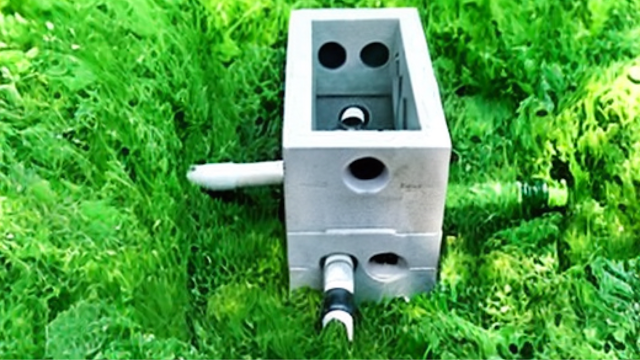

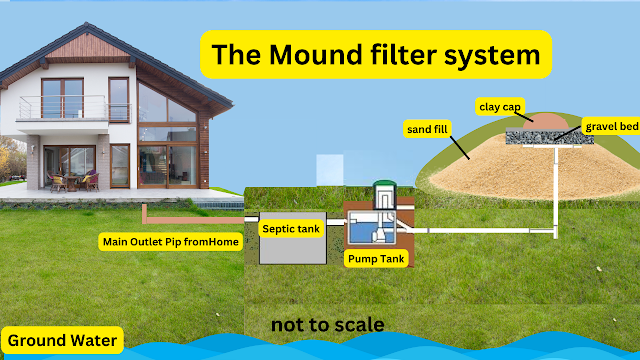
.png)

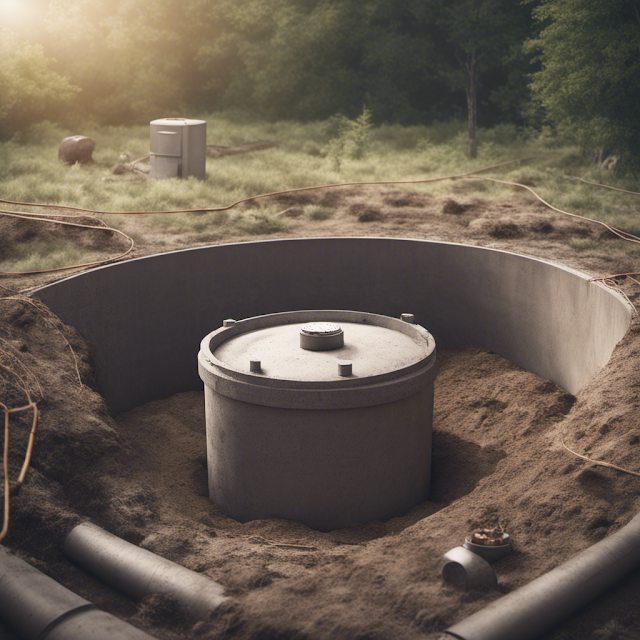
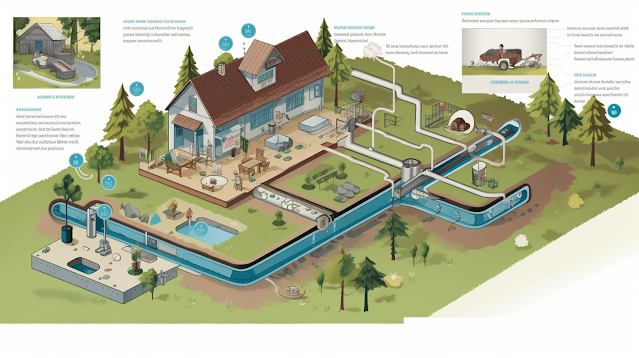
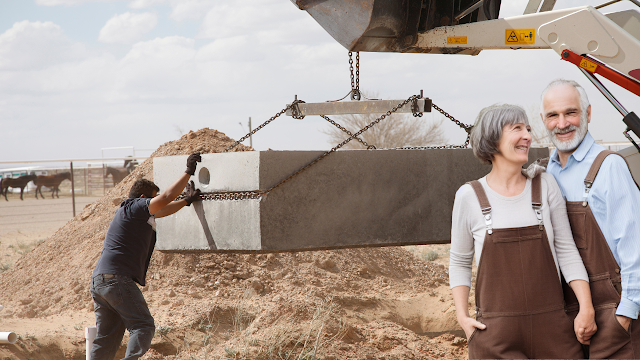


Comments
Post a Comment